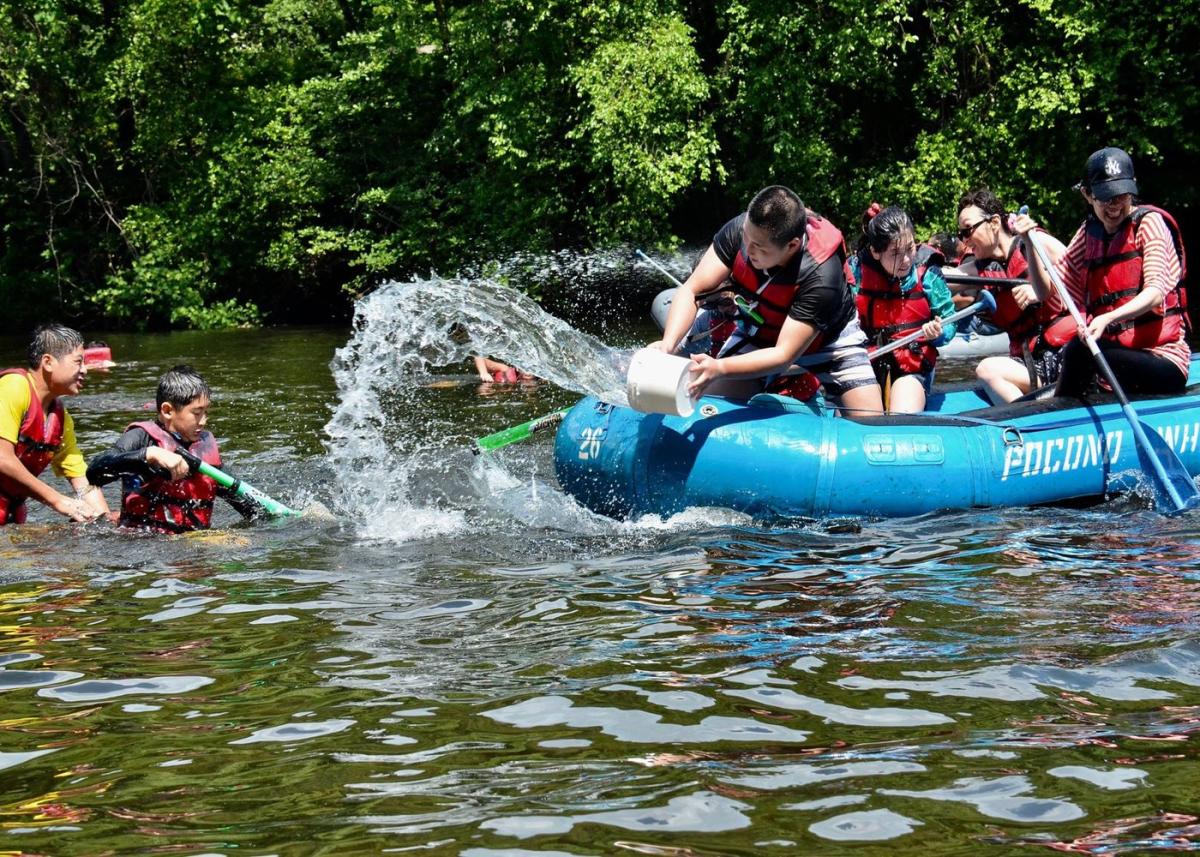Historical Routes: Interactive Activities in Iconic Cities
Unearthing Rich Narratives through Engaging Activities
Every city is a tapestry woven with layers of history, each thread telling a different story. As you set out to explore urban landscapes, the roads you walk and the buildings you pass serve as silent witnesses to the events that shaped them. Historical routes offer a dynamic way of engaging with these narratives, allowing you to dive deeper into the past while enjoying a unique experience.
Guided Walking Tours lead the way in making history palpable. Knowledgeable guides, often locals with a passion for storytelling, provide narratives that are not merely information but enthralling tales of heroism, conflict, and community spirit. In New Orleans, for instance, you can join a tour that highlights the influence of Creole culture and the impact of voodoo on this vibrant city. While strolling through the colorful French Quarter, you’ll hear stories of famous jazz musicians and the historic buildings where they performed their art.
Augmented Reality Apps are revolutionizing how history is perceived. Technology allows you to visualize historical events in real time, making each moment more tangible. Imagine standing on the battleground of Gettysburg, where you can view a reenactment of the famous Civil War battle through your phone. Such interactive experiences not only provide fascinating visual context but also enhance understanding of pivotal moments in American history.
Hands-On Workshops offer a practical approach to learning about the past. Artisans in cities like Chicago invite visitors to partake in traditional crafts, such as pottery or quilting, that are integral to the city’s cultural heritage. Through these workshops, you not only gain skills but also connect with the stories behind the craft, fostering a deeper appreciation of local history.
Discovering historical routes in iconic cities like Boston, with its Freedom Trail, or Philadelphia, known for its Revolutionary War sites, draws people into an immersive world of education mixed with entertainment. Each step along these paths brings to light landmarks enriched with history, but it is the interactivity of the experiences that lingers in memory.
![]()
With cities such as San Francisco and Chicago steeped in cultural legacy, embracing interactive activities enhances the journey of understanding the evolution of these urban environments. By participating in these engaging activities, visitors witness firsthand how history has influenced contemporary culture.
Are you ready to turn curiosity into adventure? Exploring historical routes offers a gateway to not only learning but also delightful, unforgettable experiences. With the blend of fun and education, each moment spent unraveling history is an opportunity for personal discovery that adds richness to your travels.
DIVE DEEPER: Click here to discover amazing itineraries
Engaging with History: The Power of Participation
As urban explorers embark on journeys through historic cities, the ability to interact with history can shift the experience from passive enjoyment to active engagement. The charm of historical routes lies not only in the landmarks but also in the rich, participatory activities that bring history to life while fostering a connection to the past.
Scavenger Hunts are one of the most creative ways to experience a city’s history. Many cities now offer downloadable apps that guide participants through self-directed scavenger hunts. In places like Boston, you can follow clues that lead you to hidden gems along the Freedom Trail. Each clue typically relates to a significant historical event or figure, turning the search into both a fun group activity and an educational journey.
Themed Escape Rooms create an immersive setting where history meets puzzle-solving. Cities such as San Francisco feature rooms that transport you to different eras; for example, you might find yourself navigating the Gold Rush while deciphering clues based on real historical events. By combining teamwork, critical thinking, and narrative, escape rooms allow participants to actively engage with the past in a captivating way.
In addition, many historic sites offer costumed reenactments, providing visitors with a glimpse into life in different epochs. For example, at the Colonial Williamsburg in Virginia, you might spot actors dressed in period costumes, going about their daily chores while sharing insights from the colonial era. This authentic portrayal can evoke a visceral connection to history, making the past seem vibrant and alive.
Another engaging way to connect with history is through local food tours. Many cities have food trails that spotlight traditional dishes reflective of historic cultures. Walking through the streets of Philadelphia while sampling cheesesteaks and soft pretzels provides a delicious way to learn about the city’s rich immigrant heritage. Culinary experiences reflect societal changes and can be a microcosm of the broader historical context.
Moreover, participating in community-driven events connects you with both history and local culture. Activities like storytelling festivals, historical fairs, and art exhibits often focus on local narratives that have shaped the community’s identity. For instance, the Annual Michigan BluesFest in Kalamazoo celebrates the city’s strong ties to blues music while encouraging community involvement through performances and workshops. These events are not only entertaining but educational, showcasing the ways history is celebrated and remembered by those who live it daily.
In summary, as you traverse the paths laid down by history, consider how interactive activities can enhance your experience. The combination of leisure and learning through scavenger hunts, escape rooms, reenactments, food tours, and community events opens up a remarkable window into the past. These activities not only enrich your understanding but also turn history into a participatory journey, inviting you to become part of the unfolding narrative that shapes iconic cities.
Exploring the Interactive Activities in Iconic Cities
As urban explorers delve into the realm of Historical Routes, it becomes evident that these pathways are not just mere traces of the past; they are vibrant experiences rich in education and entertainment. Travelers seeking to engage with history can participate in a plethora of interactive activities that breathe life into the stories of iconic cities.
| Category | Details |
|---|---|
| Cultural Immersion | Activities such as guided tours, reenactments, and workshops allow for deep engagement with a city’s heritage. |
| Educational Engagement | Interactive exhibits and historical storytelling facilitate an informative journey through the city’s past. |
| Scavenger Hunts | Fun and adventurous ways to explore urban landscapes while learning about significant landmarks. |
| Local Cuisine Experiences | Cooking classes that focus on traditional recipes to understand a city’s culinary history. |
With these interactive activities, travelers not only absorb historical knowledge but also create lasting memories that tie them to the locations they explore. Each experience has the potential to educate and inspire, inviting deeper reflection on how past events shape our modern society.
As you navigate through these historical routes, the blend of ancient narratives with contemporary experiences will surely enhance your journey. Stay tuned for more insights into each iconic city!
DON’T MISS: Click here to enhance your trip planning
Exploring History Through Technology and Art
In a rapidly advancing technological era, cities across the United States are leveraging digital innovations to enhance how we experience history. Augmented Reality (AR) and Virtual Reality (VR) applications are taking historical exploration to a whole new level. For instance, visitors to New York City can use apps that overlay historical images and events onto present-day landscapes, creating an immersive timeline of the past. Imagine standing at the site of the original Twin Towers while virtually experiencing the bustling hub of activity that characterized the area before 9/11. AR technology allows users to interact with history in ways that traditional tours cannot match.
Furthermore, mobile tours with GPS-enabled features provide personalized routes, depending on users’ interests. Companies such as Detour offer audio-guided walking tours narrated by local historians or notable personalities. This creates a more intimate experience, as listeners can stroll through iconic neighborhoods while immersing themselves in the stories of integral events and figures from that locale.
Artistic endeavors also play a significant role in bringing history to life. In cities like New Orleans, the vibrant street art scene showcases cultural narratives through murals and installations that reflect historical events and local folklore. Participatory art projects—where locals and tourists alike can contribute—transform these artworks into communal storytelling platforms. For example, the New Orleans Mural Project encourages public involvement while illustrating the city’s resilience and creativity following adversities like Hurricane Katrina.
A growing trend in historical walking tours integrates performance art and theater. Companies in cities such as Chicago and Philadelphia craft tours that include live performances from actors reenacting pivotal moments in history during the walk. Participants might witness a re-creation of the Chicago Fire of 1871, while guides share the implications and struggles faced during that era. This dramatized storytelling approach captures imagination and helps solidify the historical context in an entertaining format.
Accessible historical trails also play a critical role in making rich narratives available to all. Many cities have developed wheelchair-friendly routes that highlight significant landmarks, ensuring that everyone can engage with history regardless of physical limitations. Programs such as the Los Angeles Historical Trail offer guided tours designed for those with mobility challenges, emphasizing how history can be inclusive while catering to diverse needs and perspectives.
Moreover, educational programs targeting young learners involve hands-on historical activities. Institutions such as the Smithsonian National Museum of American History in Washington, D.C., offer workshops where children can create their own artifacts or participate in mock archaeological digs. Such initiatives not only cultivate a sense of curiosity but also instill an appreciation for the importance of history in shaping their identity and community.
Finally, the rise of social media challenges related to historical routes invites participants to share their experiences with a wider audience. Contests urging explorers to post pictures linked to historical landmarks using specific hashtags can amplify awareness of the rich narratives embedded within local communities. Enthusiasts can explore cities like Seattle or Charleston while contributing to collective storytelling through #HistoryInTheCity, hence transforming personal experiences into community-wide celebrations of history.
DIVE DEEPER: Click here to learn more about optimizing your travel time
Conclusion: Reviving History Through Interactive Exploration
In the heart of America’s iconic cities, the fusion of historical routes and interactive activities offers an unprecedented way to connect with the past. Through the innovative use of technology, such as AR and VR, we are no longer mere observers of history; we become participants in its unfolding narrative. The ability to visualize events as they occurred in specific locations transforms how we perceive our surroundings and deepens our understanding of their significance.
Moreover, the integration of art, performance, and community engagement enriches the historical tapestry of each city. From the breathtaking murals of New Orleans to immersive walking tours in Chicago, these endeavors not only celebrate culture but also invite collaboration among visitors and residents alike. Such practices affirm that history is not static but a living story continuously shaped by those who engage with it.
As cities increasingly prioritize accessibility and inclusivity in their historical offerings, they acknowledge the diverse ways individuals experience and interact with their past. Programs tailored for young learners lay the foundation for future generations to appreciate history, ensuring its relevance and continuity.
Ultimately, historical routes and their accompanying interactive experiences serve as a powerful reminder that history is all around us, waiting to be uncovered and shared. By embracing the myriad activities available, from poignant reenactments to community-driven art projects, we not only celebrate our shared heritage but also foster a collective identity that transcends time. It’s time for explorers—both seasoned and new—to embark on journeys that reveal the unexpected stories lying at the crossroads of our past and present.


